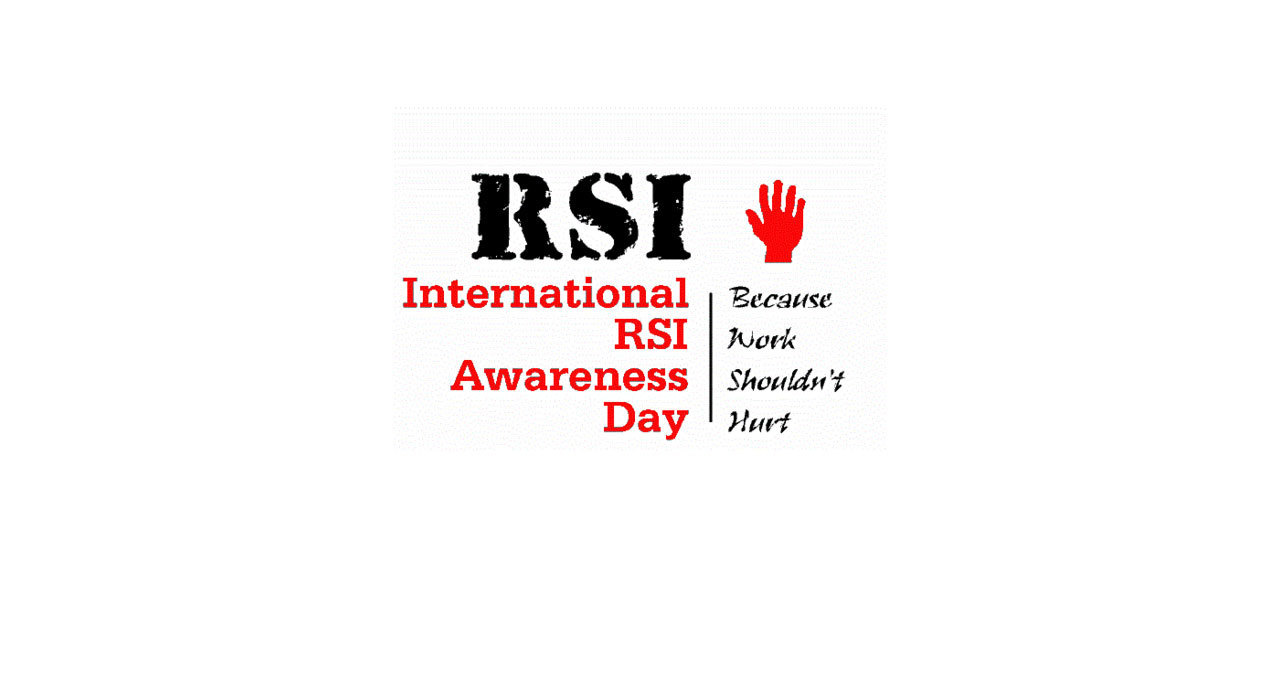
Each year, the last day of February marks Repetitive Strain Injury (RSI) Awareness Day. This particular day brings awareness to an occupational hazard that affects tens of thousands of people in the workforce every day. In addition, RSI Awareness Day is dedicated to RSI education and prevention.
What is a Repetitive Strain Injury?
Also known as musculoskeletal disorders (MSDs), repetitive strain injuries are an umbrella term used to describe a family of painful disorders affecting tendons, muscles, nerves and joints in the neck, upper and lower back, chest, shoulders, arms and hands.
Causes:
Gripping, holding, bending, twisting, clenching, and reaching - these ordinary movements that we do every day are not particularly harmful, but in the work place they can be. What does make them hazardous in work situations; is the continual repetition of the movements. Other contributing work factors may include awkward postures and fixed body positions, excessive force concentrated on small parts of the body (i.e, the hand or wrist), or a fast pace work environment with insufficient breaks or recovery time, and psychosocial factors such as stress.
The Result
Studies have shown that one in every ten Canadian workers are affected by some form of RSI. In addition to the emotional and physical strains that these injuries place on those affected, the economic impact of RSIs is estimated to be $26 billion annually. RSIs and MSDs also account for more than 40 per cent of all lost-time injuries allowed by Ontario’s Workplace Safety and Insurance Board (WSIB.) This is the single largest class of compensation claims in the province! Many more go unreported, and many that are reported are turned down.
/mgl-integratedhealthcentre-ca/5ed2b442-752b-4701-ea48-25c63e6d5e4a.png)
The majority of RSIs or MSDs are preventable. How?
Hazards are best eliminated at the source. Prevention of RSIs should focus on eliminating repetitive work through job design which may involve mechanizing certain tasks. In addition, jobs should be structured so that workers can rotate between different tasks, using different muscles groups.
When it is not practical to eliminate the repetitive aspect of a job, a well-designed workstation that is adjusted to fit the worker and allows standing, sitting, or sitting-standing positions, can help. Workers should be provided with appropriate, carefully maintained tools and equipment to reduce the force needed to complete tasks and prevent muscle strain
Since RSIs develop slowly, workers should be trained to understand what causes these injuries, how best to prevent them, and how to recognize the early signs and symptoms of RSI. Workers need to know how to adjust workstations to fit their tasks and individual needs. In addition, employers should encourage workers to take short, frequent rest breaks.
Actions that can be taken include:
- Report symptoms and hazards early to your supervisor and joint health and safety committee (JHSC) or health and safety representative
- Report work-related MSDs to WSIB immediately
- Insist on quality training to address these issues
- Press employers to implement ergonomic prevention solutions
- Encourage governments to enact effective and enforced ergonomic regulations.
To learn more:
Canadian Chiropractic Association and How They Can Help RSIs.
The Workers Health and Safety Centre on RSI Day
Canadian Centre for Occupational Health and Safety on RSI Day





